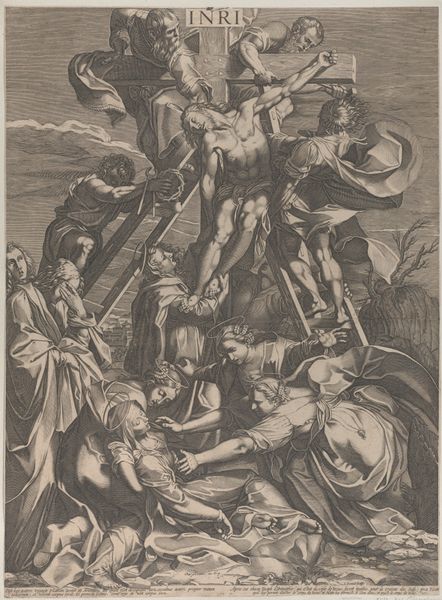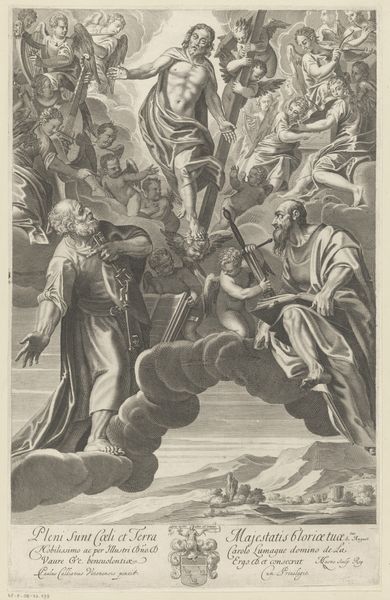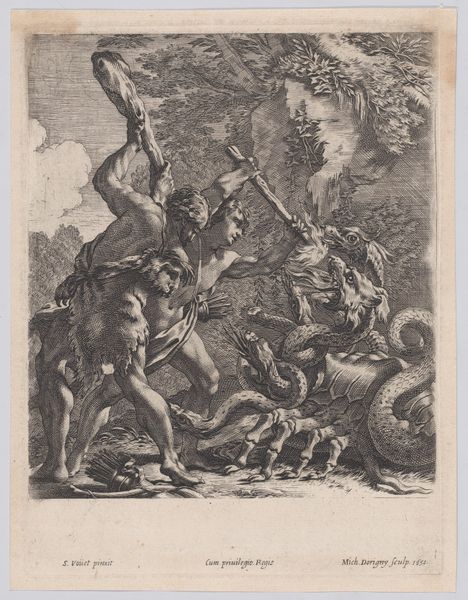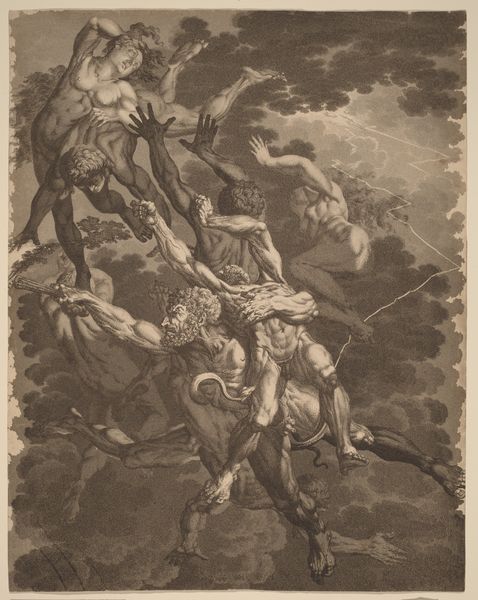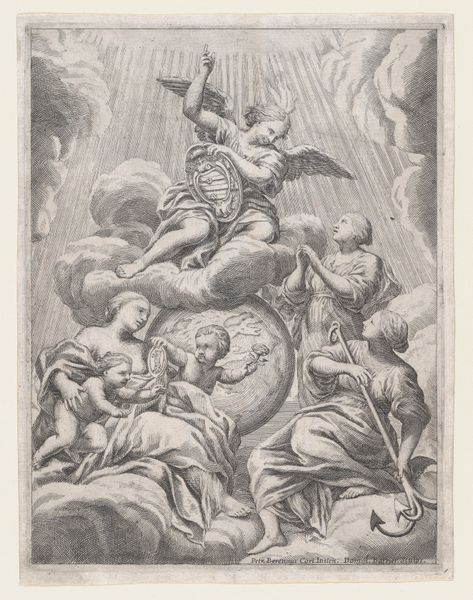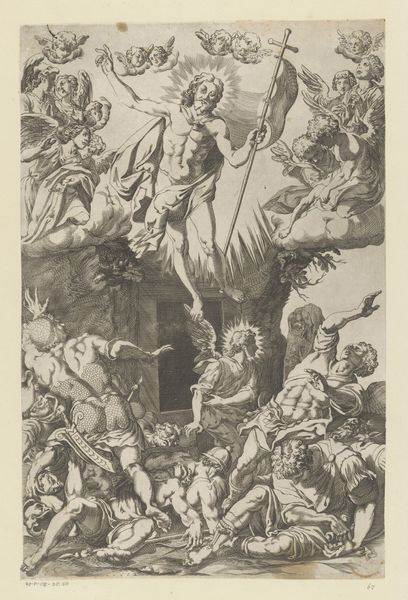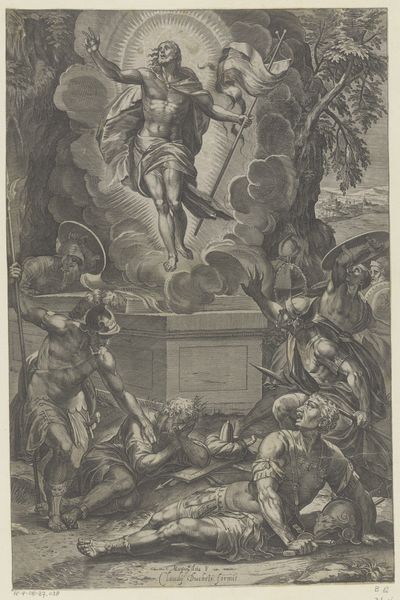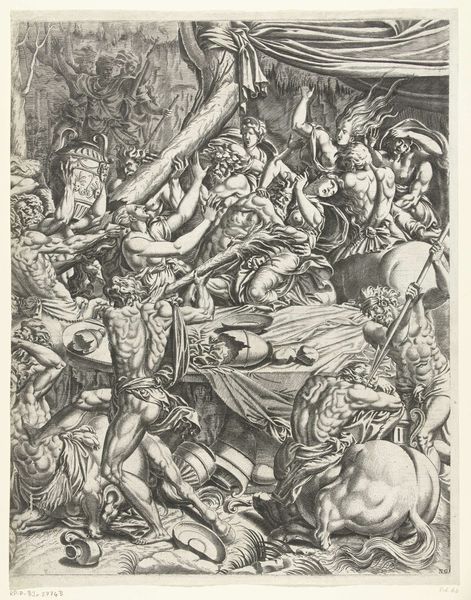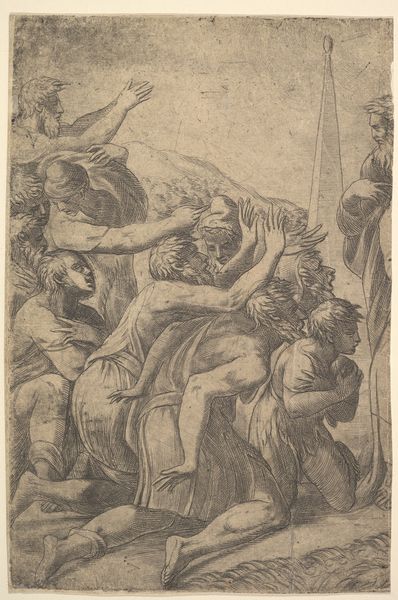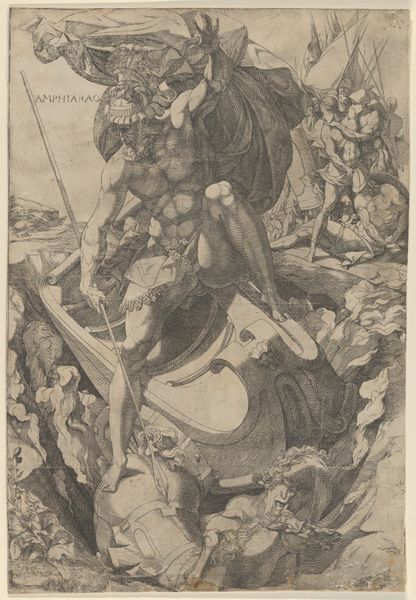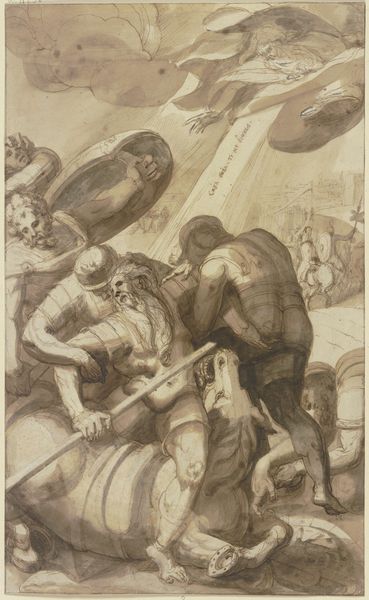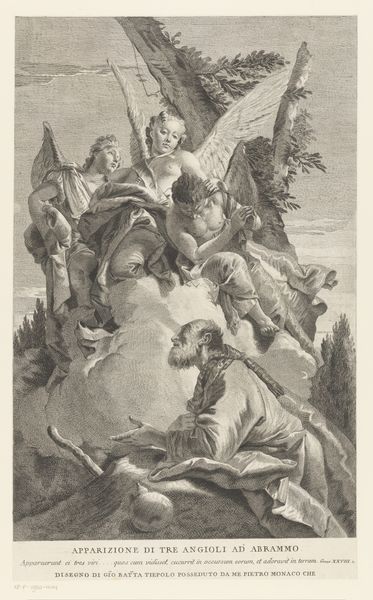
The Trophy of Constantine, with Victory at left crowning the emperor with a laurel, behind them a bounty of arms, armor, prisoners, and Maxentius' head on a stick 1645 - 1673
0:00
0:00
drawing, print, metal, engraving
#
portrait
#
drawing
#
allegory
#
baroque
# print
#
metal
#
figuration
#
history-painting
#
armor
#
engraving
Dimensions: Sheet (Trimmed): 15 9/16 × 11 1/2 in. (39.5 × 29.2 cm)
Copyright: Public Domain
This engraving portrays Constantine's triumph, laden with symbols of power and victory. Victory, on the left, crowns the emperor with laurel, an ancient emblem of triumph adopted by Rome, signaling military and imperial glory. Behind them, we see arms, armor, and the severed head of Maxentius, all signifiers of conquest. Consider the laurel wreath itself. From ancient Greece to Rome, it was bestowed upon victors, poets, and emperors, a visual declaration of supreme achievement. The laurel reappears in Renaissance paintings crowning poets, and is seen even in modern logos, subtly whispering of success and dominance. The emotional resonance of such imagery is profound. The display of victory, the subjugation of enemies—these are powerful symbols that tap into the collective psyche, evoking feelings of pride, security, but also, perhaps, a primal fear of defeat. This cyclical return of symbols invites us to reflect on how societies construct and perpetuate narratives of power, and how these images continue to shape our perceptions.
Comments
No comments
Be the first to comment and join the conversation on the ultimate creative platform.
